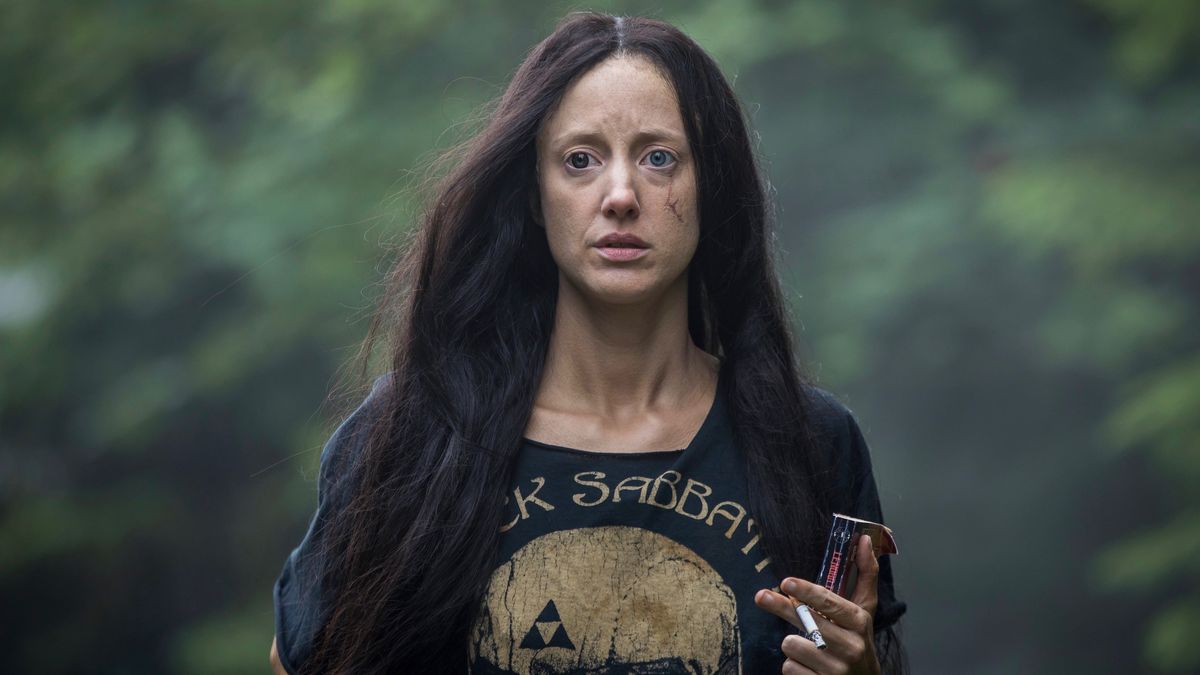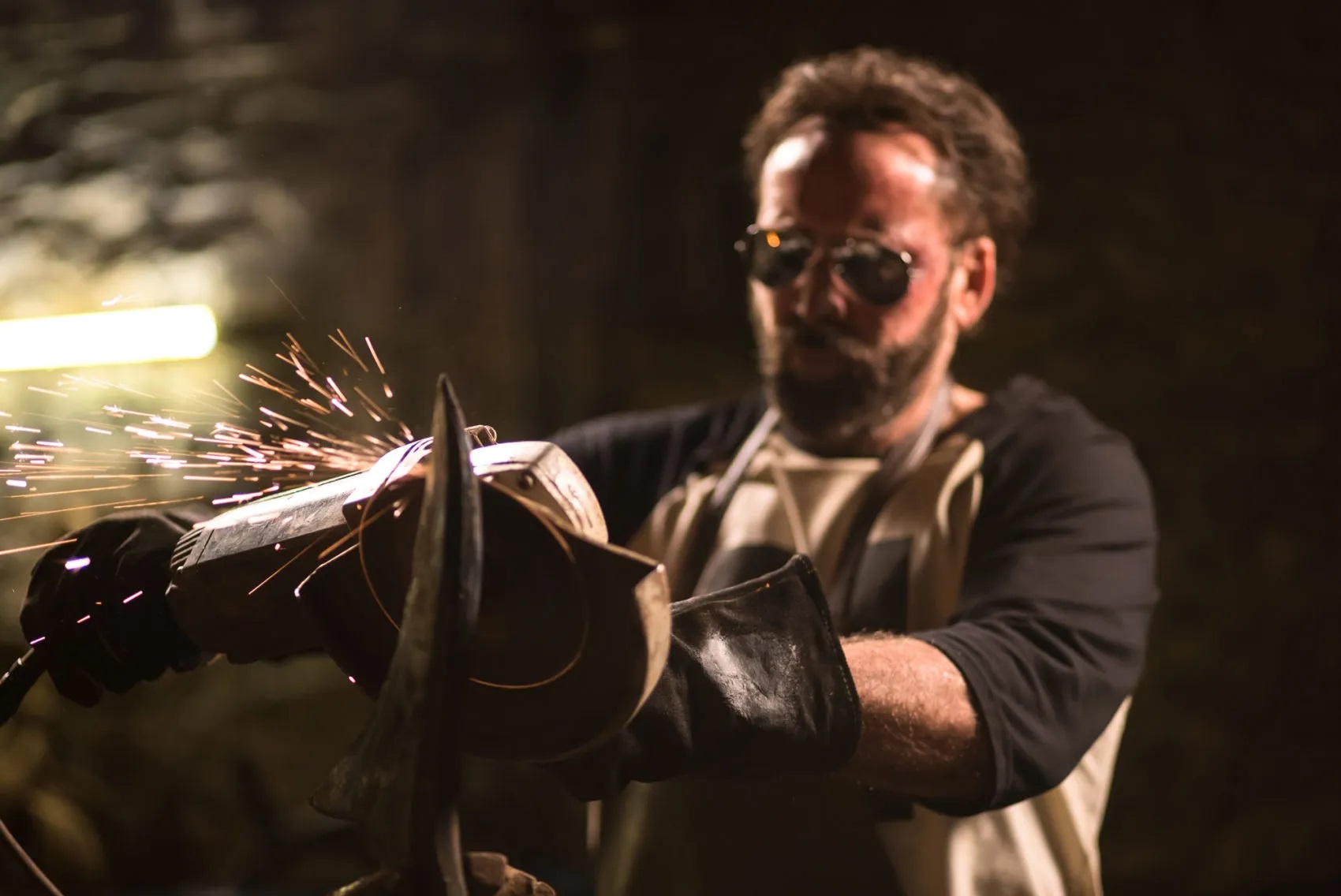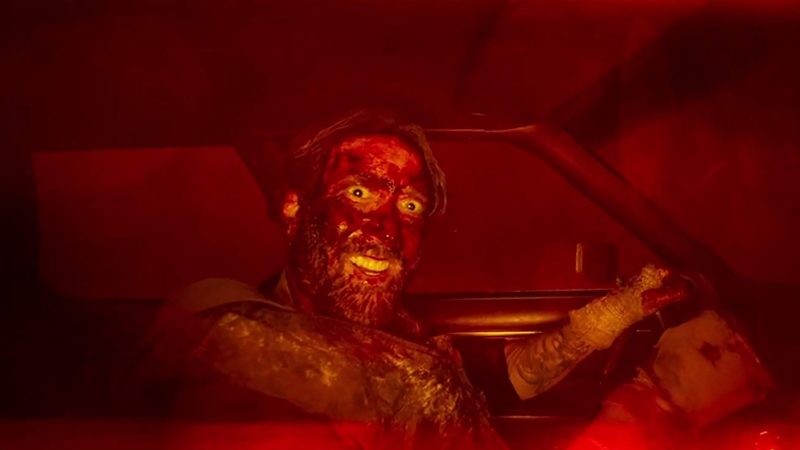Mandy, a film directed by Panos Cosmatos, had its premiere at the Cannes Film Festival and received a standing ovation that lasted for five minutes. It might sound cliché, but for a film to receive such applause from the Cannes audience, it needs to be visually rich and satisfying. Even with just this information, we can anticipate that the film will be a visually stunning spectacle. And indeed, it is. Mandy, the second feature film by the director, encompasses a visual chaos that is bizarre enough to make you wonder, “What did I just watch?” However, the film’s story doesn’t even come close to matching its visuals, and it’s evident that the director has no intention of conveying any particular message. His sole objective is to fill the screen with blood and brutality, presenting a fantasy frenzy.
Regarding the plot of Mandy, which was showcased as part of the Filmekimi event, it revolves around an ordinary couple who are suddenly targeted by a cult for no apparent reason other than the fact that the cult desires them. This encounter, ending in death, transforms into a long journey of revenge. Such a journey is so extensive that every path taken resembles a Hansel and Gretel scenario adorned with blood.

Despite being a simple revenge film, director Panos takes us on a dark, red-hued journey reminiscent of Sin City. It’s as if Sam Raimi and David Cronenberg emerged from the 80s and collaborated to create this film. The film is remarkably well-executed in terms of content and visual design. What sets the director apart from others are a few distinctive details worth mentioning. Instead of employing a multitude of colors, Panos opts for intense monochromatic tones, designing specific themes for different settings within the film. Unlike Nicolas Winding Refn’s use of multiple LED lights, Panos focuses on singular themes, particularly emphasizing the color red. Additionally, he employs an effect called “Glow” in the editing process, intensifying the brightness of lights to create a dazzling effect. What’s even more intriguing is how the director fills all the highlights with grain, establishing a peculiar composition that merges elements of modern and old films. Whether this visual aesthetic is good or bad, I honestly couldn’t deduce, but it is undeniably captivating.
Despite its meticulous attention to visuals and colors, the film has a straightforward plot. Content-wise, it revolves around pure savagery, with bodies being torn apart, blood flowing like rain, and locations designed to evoke disgust. The director takes you on a visually captivating and repulsively violent journey. Ironically, as someone who excessively enjoys films where people die in crazy ways, for some reason, I couldn’t warm up to Mandy. Although I appreciate the film’s approach to design, its content failed to excite me. And yet, Nicolas Cage is in the movie.

The most outstanding aspect that stands out in the film’s visuals is Nicolas Cage. Having impressed me with his performance in the movie Mom and Dad this year, the actor’s portrayal in Mandy is extraordinary. Cage, whom Panos initially wanted to play the cult leader, insisted that he should portray an old man, and he internalized this so well that he delivered one of the most insane performances of the year. Cage has always been an eccentric actor, but films like Mandy, which push the boundaries of madness and unleash the actor’s craziness, allow him to express himself even better.
In conclusion… While Mandy may be a suitable selection for festivals like Filmekimi, it is not a film that will be extensively discussed or remembered. As a horror and gore enthusiast, I might recall it as a reference years later. Despite the director’s attempt to overshadow everything with visual preferences, the film’s simple story reduces its memorability. If you’re in the mood for an enjoyable experience of a wild revenge journey on the big cinema screen, you can even watch the film solely for Nicolas Cage.

Cast & Crew
director: Panos Cosmatos
writers: Panos Cosmatos, Aaron Stewart-Ahn
starring: Nicolas Cage Andrea Riseborough Linus Roache, Richard Brake
USA – BELGUIM | 2018 | 122 MINUTES |
